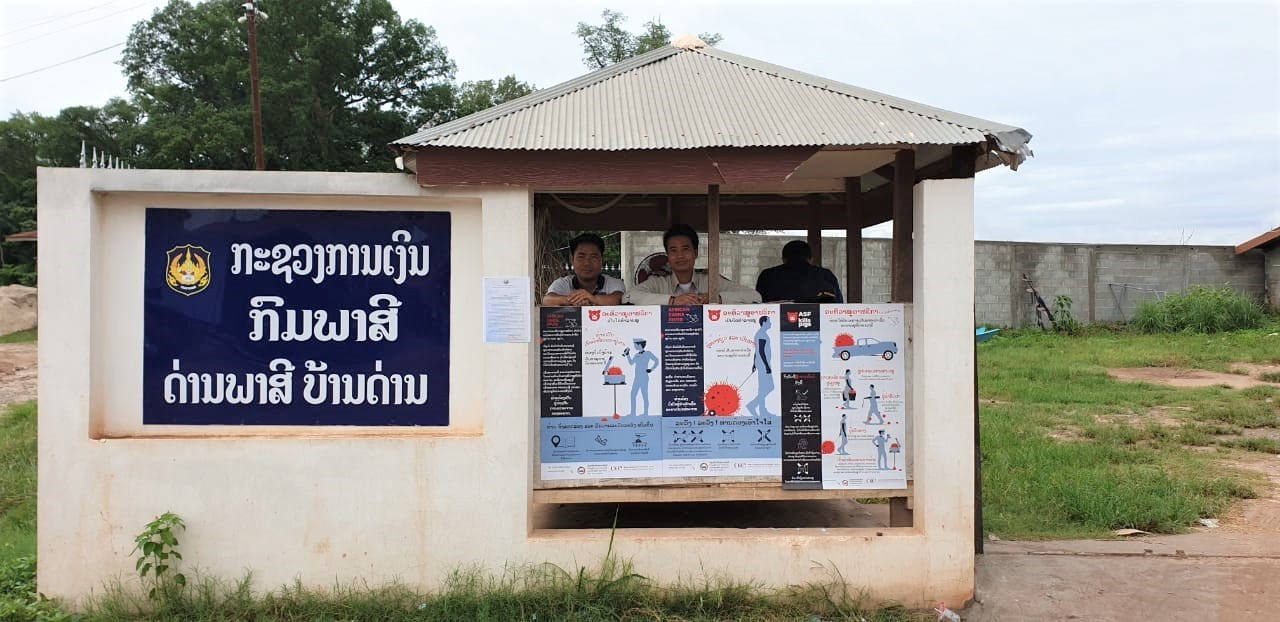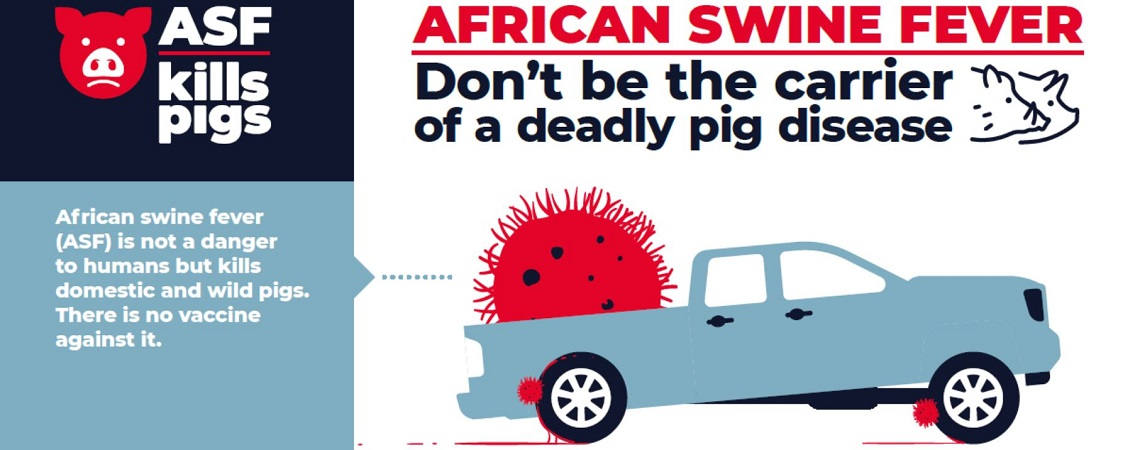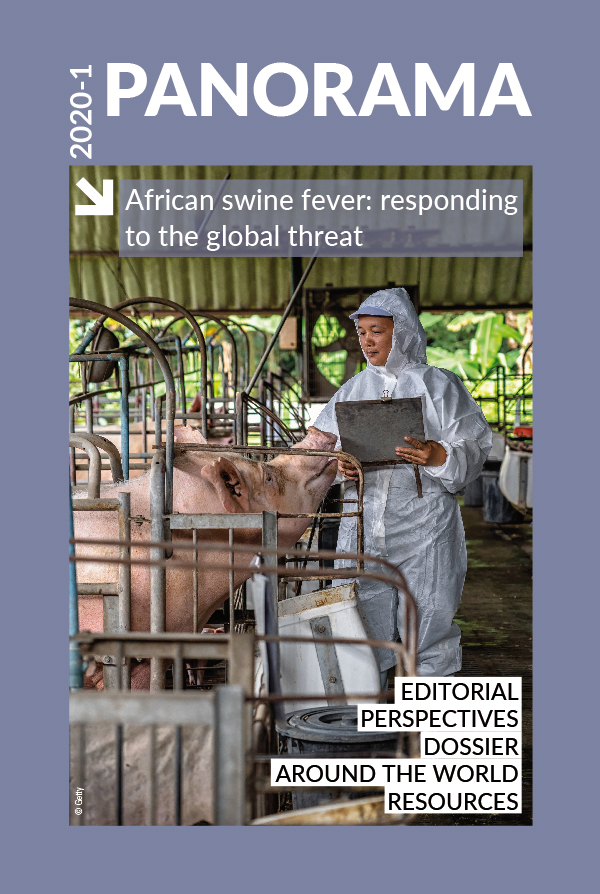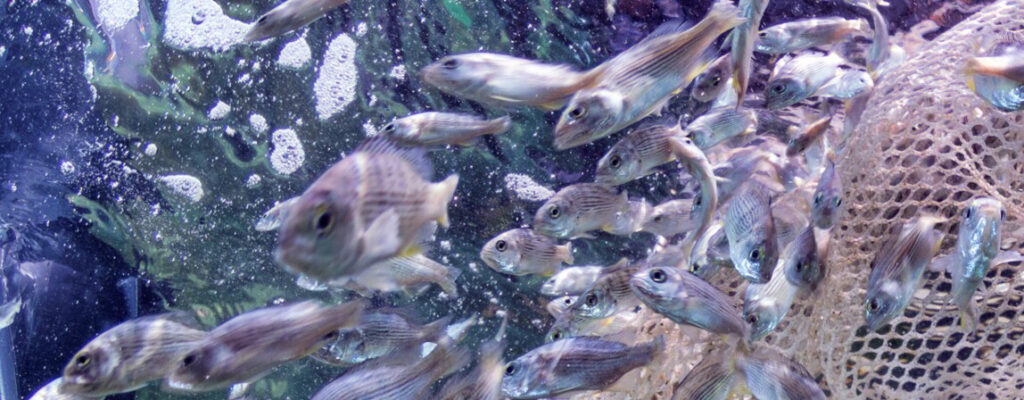Perspectives Posted on 2020-07-07 10:15:46
OIE actions
Risk communication: a key element in the response to ASF
Keywords
Authors
C. Bertrand-Ferrandis(1), L. Escati(2) & A. Lavarello Schettini(3)*
(1) Head of the Communication Department, World Organisation for Animal Health (OIE).
(2) Communications Officer, Communication Department, World Organisation for Animal Health (OIE).
(3) African Swine Fever Communications Officer, Communication Department, World Organisation for Animal Health (OIE).
* Corresponding author: a.lavarello@oie.int
Limiting the spread of ASF through efficient communication
Veterinary Services around the world are working exhaustively to prevent and control ASF. However, as the disease is transmitted mainly by human carelessness, transdisciplinary and intersectoral collaboration is needed. It is important that all those who might be involved in the direct and indirect transmission of ASF are made aware and acknowledge the importance of their actions, and understand how they can contribute to stopping the spread of this deadly pig disease. In this scenario, efficient risk communication becomes an essential component of the disease response.
Yet communication challenges exist. Given that ASF does not pose a direct threat to human health, risk perception among some of the key actors continues to be low. Communication efforts must highlight the impact of the disease on animal health and welfare, as well as throughout different levels of society, such as farmer livelihoods, food security, countries’ economies and international trade.
The impact of ASF goes far beyond the pig sector, since pig farming is intertwined with the global economy. ASF can leave entire families without jobs and threatens the world’s supply of pork and other pig products, such as heparin, an anticoagulant for humans with active ingredients derived from pig intestines. Thus, efficient communication is crucial to raise awareness and prompt action to reduce the risk of ASF spread and its impact.
Encouraging a change in risky behaviours
The ASF situation worldwide offers an opportunity to make positive changes and improve farming practices. To achieve this, our communication efforts must highlight the link between the changes in behaviours and practices that we want to achieve in our target audiences and their own value systems. Messages should therefore be targeted and tailored to specific audiences, after listening to and understanding their needs. Additionally, for these communication efforts to be effective and sustainable over the long term, it is vital that policy-makers provide the conditions that make it possible to facilitate change, through national programmes that encourage such change and through legislation.
Countries and stakeholders are encouraged to use and disseminate the tools of the ‘ASF Kills Pigs’ campaign
To support countries in driving these changes, the World Organisation for Animal Health (OIE) has developed an awareness campaign that targets different actors involved in the spread of the disease. Hunters, small pig farmers and large commercial pig producers, as well as travellers and the transport industry, are called upon to play an active role in preventing this deadly pig disease and to avoid becoming carriers. Countries and stakeholders are encouraged to use and disseminate the tools of the ‘ASF Kills Pigs’ campaign to promote the precautions necessary to protect both pigs and the farming economy as a whole.

http://dx.doi.org/10.20506/bull.2020.1.3117
| OIE portal on African swine fever |













